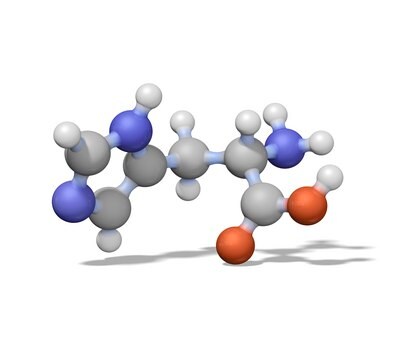S2812
SNC80
≥98% (HPLC), solid
Sinónimos:
(+)-4-[(αR)-α-((2S,5R)-4-Allyl-2,5-dimethyl-1-piperazinyl)-3-methoxybenzyl]-N,N-diethylbenzamide, SNC 80, SNC-80
About This Item
Productos recomendados
Nivel de calidad
Ensayo
≥98% (HPLC)
Formulario
solid
color
off-white
solubilidad
DMSO: soluble
cadena SMILES
CCN(CC)C(=O)c1ccc(cc1)[C@H](N2C[C@H](C)N(CC=C)C[C@H]2C)c3cccc(OC)c3
InChI
1S/C28H39N3O2/c1-7-17-30-19-22(5)31(20-21(30)4)27(25-11-10-12-26(18-25)33-6)23-13-15-24(16-14-23)28(32)29(8-2)9-3/h7,10-16,18,21-22,27H,1,8-9,17,19-20H2,2-6H3/t21-,22+,27?/m0/s1
Clave InChI
KQWVAUSXZDRQPZ-QNWUEUMSSA-N
Información sobre el gen
human ... OPRD1(4985)
mouse ... Oprd1(18386)
rat ... Oprd1(24613) , Oprm1(25601)
Aplicación
Acciones bioquímicas o fisiológicas
Características y beneficios
Código de clase de almacenamiento
11 - Combustible Solids
Clase de riesgo para el agua (WGK)
WGK 3
Punto de inflamabilidad (°F)
Not applicable
Punto de inflamabilidad (°C)
Not applicable
Equipo de protección personal
Eyeshields, Gloves, type N95 (US)
Elija entre una de las versiones más recientes:
¿Ya tiene este producto?
Encuentre la documentación para los productos que ha comprado recientemente en la Biblioteca de documentos.
Nuestro equipo de científicos tiene experiencia en todas las áreas de investigación: Ciencias de la vida, Ciencia de los materiales, Síntesis química, Cromatografía, Analítica y muchas otras.
Póngase en contacto con el Servicio técnico
![[D-Ala2, N-Me-Phe4, Gly5-ol]-Enkephalin acetate salt ≥97% (HPLC)](/deepweb/assets/sigmaaldrich/product/structures/227/014/768064c2-9ae6-47bd-8550-e2aa5c3b61de/640/768064c2-9ae6-47bd-8550-e2aa5c3b61de.png)

![[D-Ala2, D-Leu5]-Enkephalin acetate salt ≥95% (HPLC)](/deepweb/assets/sigmaaldrich/product/structures/934/176/d990e568-42df-43e9-a231-da7a3d9d7687/640/d990e568-42df-43e9-a231-da7a3d9d7687.png)





